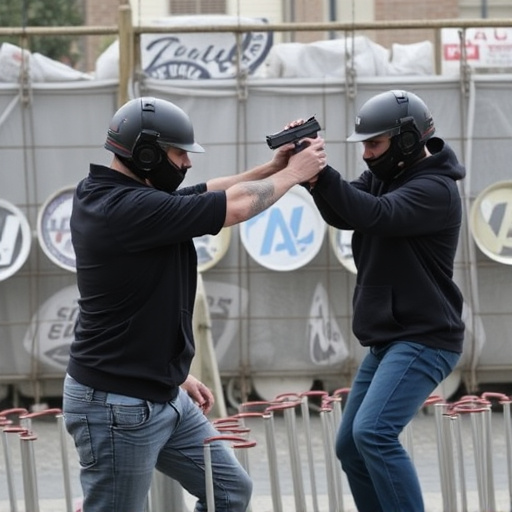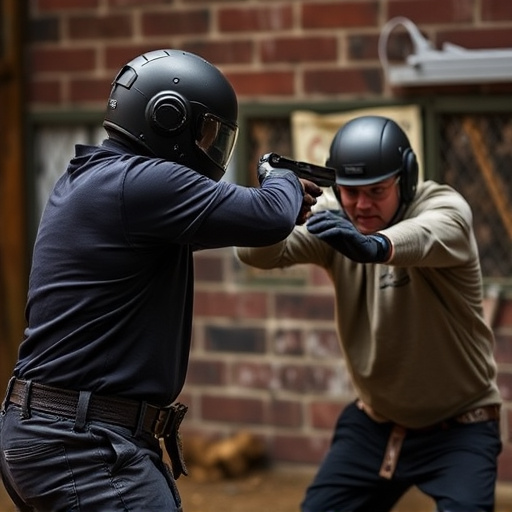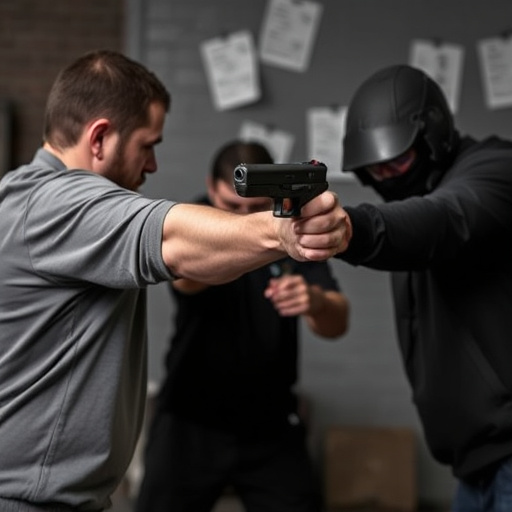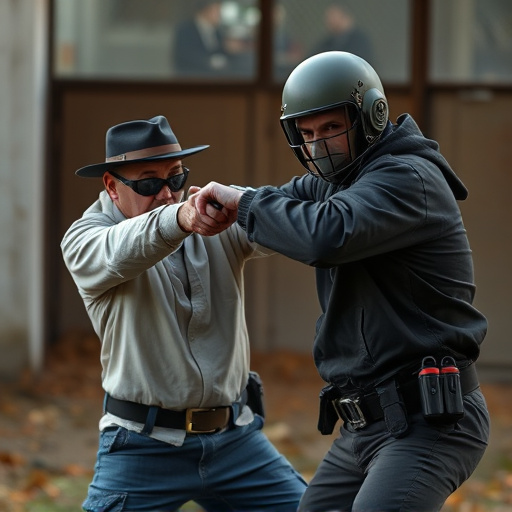When choosing a self-defense tool, understand that Tasers and stun guns have distinct capabilities. Stun guns are better for longer ranges and single assailants, while Tasers are effective against multiple targets in close proximity. For women seeking the best stun gun, consider compact, easily concealable models with user-friendly designs, LED lights, and alarms, offering both discretion and power tailored to their specific needs and scenarios.
“Uncover the power of personal protection with a deep dive into Tasers and stun guns, two prominent self-defense tools. This comprehensive guide aims to demystify these devices, offering a clear understanding of their unique capabilities. We explore key differences in functionality and effectiveness, providing valuable insights for women seeking optimal self-defense solutions. From mechanical mechanisms to user safety, discover the factors that set them apart. Learn which stun gun may be the best fit, ensuring peace of mind and enhanced security for women everywhere.”
- Understanding Tasers and Stun Guns: A Comprehensive Overview
- Key Differences: How They Work and Their Effectiveness
- Considerations for Women Choosing Self-Defense Weapons
- The Ultimate Decision: Which is the Best Stun Gun for Women?
Understanding Tasers and Stun Guns: A Comprehensive Overview

Tasers and stun guns are both non-lethal weapons designed for personal protection, but they function differently. Tasers, short for Tactical Electronic Device, use electrical current to disrupt muscle control, causing the target to fall to the ground temporarily. They typically fire two small probes connected to wires that deliver the electric shock. Stun guns, on the other hand, emit a powerful electric pulse through a metal probe or surface contact, causing temporary paralysis and disorientation.
When considering the best self-defense stun gun for women (or anyone), understanding these differences is crucial. Stun guns often have a longer range and can be more effective against larger targets, while tasers are known for their ability to quickly incapacitate multiple individuals in close quarters due to their probe-based delivery system. Both options offer significant advantages in personal safety, especially in situations where non-lethal force is necessary.
Key Differences: How They Work and Their Effectiveness

When comparing a Taser and a stun gun, understanding their unique mechanisms and effectiveness is crucial, especially for those seeking effective self-defense tools, particularly for women looking for the best self-defense stun gun. These devices operate on different principles. A Taser fires small probes connected to electric cables, delivering a powerful electrical pulse that temporarily disables the target by disrupting muscle control. In contrast, a stun gun generates a high-voltage, low-current electrical discharge that causes severe pain and muscle spasms, rendering the attacker immobile without permanently harming them.
In terms of effectiveness, Tasers are known for their ability to incapacitate multiple aggressors simultaneously, making them a popular choice for law enforcement. Stun guns, while less powerful in terms of range and impact, offer a closer-range defense option with a focus on personal safety. For women considering self-defense tools, understanding these differences is vital; Tasers might be more suitable for scenarios requiring crowd control or facing multiple threats, while stun guns provide a portable and accessible option for personal protection against a single assailant.
Considerations for Women Choosing Self-Defense Weapons

When considering self-defense options, women may face unique challenges and have specific needs. One key consideration is choosing a weapon that offers a balance between power and portability. Traditional Tasers often require more training to use effectively due to their two pronged design, which can be a concern for those seeking an immediate response in potentially dangerous situations. In contrast, stun guns, especially compact models designed with women’s self-defense in mind, provide a straightforward solution. These stun devices typically deliver a powerful electric shock with the push of a button, making them user-friendly and ideal for situations where every second counts.
For women looking for the best self-defense stun gun, features like ease of use, weight, and visibility are crucial. Smaller stun guns that fit comfortably in a purse or pocket offer discreet protection without compromising effectiveness. Additionally, some models incorporate LED lights or loud alarms as additional deterrents, providing multi-layered safety measures tailored to women’s needs in various environments.
The Ultimate Decision: Which is the Best Stun Gun for Women?

When it comes to choosing the ultimate self-defense tool for women, the stun gun stands out as a popular and effective option. But among various models available, which one truly offers the best protection? The answer lies in understanding the unique needs and considerations of female users.
One key factor is size and ease of carry. Smaller, compact stun guns designed with feminine hands in mind can provide discreet yet powerful self-defense. They are easy to conceal and can fit comfortably in a purse or clip to clothing, ensuring accessibility when needed most. Additionally, features like LED lights and loud alarms enhance their effectiveness as deterrents. Therefore, the best self-defense stun gun for women is one that combines compact design, ease of use, and robust safety features, empowering them with peace of mind and the confidence to protect themselves in any situation.
When it comes to choosing the best self-defense stun gun for women, understanding the key differences between Tasers and stun guns is essential. While both devices utilize electric current to disable an attacker temporarily, their mechanisms and effectiveness vary significantly. Tasers fire probes that deliver a high-voltage, low-current shock, causing muscle spasms and immobilizing the target. Stun guns, on the other hand, emit a continuous electrical discharge, causing intense pain and disorientation. For women seeking personal safety, selecting the right weapon depends on individual needs, comfort level, and training. In light of this, considering factors like power output, ease of use, and legal implications is crucial to make an informed decision for effective self-defense.
